3 Oceania
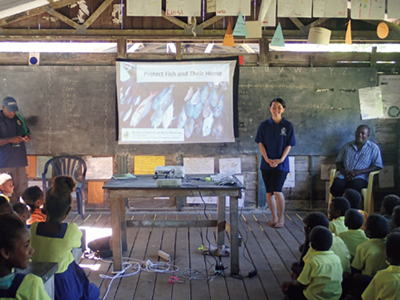
A Japan Overseas Cooperation Volunteer (JOCV) giving a class on community-based coastal resources management at a primary school in Guadalcanal Province, Solomon Islands. (Photo: JICA)
The Pacific island countries are not only Japan’s “neighbors” bound by the Pacific Ocean, but also share deep historical ties with Japan. Having enormous Exclusive Economic Zones (EEZ), these countries are key to Japan’s maritime transport activity and provide essential fishing grounds for bonito and tuna fisheries. As a result, the stability and prosperity of Pacific island countries are very important to Japan.
Meanwhile, many Pacific island countries are relatively new independent states with the urgent task of becoming economically independent. In addition, they face common problems specific to small island countries, such as small economies dependent on primary industries, territories geographically stretched across the sea, difficulty in access to the international market, and vulnerability to natural hazards. Based on this situation, as a good partner with Pacific island countries, Japan provides assistance to support their self-reliant and sustainable development.
●Japan’s Efforts
In order to achieve political stability and self-reliant economic development in Pacific island countries, it is crucial to overcome socio-economic vulnerabilities and to provide assistance to the entire region. In addition to promoting cooperation with the Pacific Islands Forum (PIF),(Note6) a framework for regional cooperation composed of Pacific island countries, Japan has hosted the Pacific Islands Leaders Meeting (PALM), a summit meeting between Japan and Pacific island countries every three years since 1997. Furthermore, the PALM Ministerial Interim Meeting has been held approximately 18 months after each PALM since 2010.
In May 2018, the Eighth Pacific Islands Leaders Meeting (PALM8) was held in Iwaki City, Fukushima Prefecture. With the pillars of “(i) free, open and sustainable oceans; (ii) strengthening the foundations for resilient and sustainable development, and (iii) revitalization of people-to-people exchanges,” and based on the achievements so far, Japan announced plans to continue the steady implementation of development assistance as before, as well as further strengthening human resource development and exchanges (over 5,000 people in three years), which are the foundation for growth and prosperity.
In May 2019, the Interagency Committee for the Promotion of Cooperation with Pacific Island Countries, determined the basic policy of reinforcing and concentrating resources for Pacific island countries and strengthening initiatives with all-Japan efforts. Based on the basic policy, Japan is strengthening bilateral cooperation, including the development of basic infrastructure such as ports and airports, as well as technical cooperation, with multiple countries. Under the first pillar of PALM8, “free, open, and sustainable oceans,” Japan conducted training on the prevention of illegal, unreported, and unregulated (IUU) fishing for officials from Pacific island countries. Under the second pillar of “strengthening the foundations for resilient and sustainable development,” drawing on Japan’s expertise and experience, Japan provides comprehensive assistance through “mainstreaming disaster risk reduction,” which includes training meteorological agency personnel of each country and the development of appropriate evacuation systems for residents, as well as strengthening human resources and systems related to waste management to build disaster-resilient societies in Pacific island countries. Furthermore, to support Pacific island countries in addressing issues related to climate change, Japan collaborates with the Secretariat of the Pacific Regional Environment Programme (SPREP), a regional international organization based in Samoa, to develop capacity in the area of addressing climate change in each country. Under the third pillar of “revitalization of people-to-people exchanges,” Japan provides support for master’s education programs in Japanese graduate schools, as well as internship programs in Japanese ministries and agencies, for young government officials who will shoulder the future of Pacific island countries.
10 Pacific Island Countries *1
Project for Reinforcing Meteorological Training Function of FMS
Technical Cooperation Project (December 2014 - December 2018)
Since visiting the Fiji Meteorological Service (FMS) as a short-term expert in 1993, JICA expert Mr. KUROIWA Koji has been assisting in the field of meteorology in Oceania for 27 years. Utilizing the knowledge and experience he gained working at the Japan Meteorological Agency and the World Meteorological Organization (WMO), he has not only provided technical guidance to the meteorological stations in Oceanian countries, but also closely assisted the meteorological bureaus of those countries for many years, making it his life’s work to act as a bridge between these meteorological bureaus and related organizations and companies, including JICA, the Japan Meteorological Agency, the WMO, other donors, and observational equipment manufacturers.
This steady assistance has borne fruit. FMS, which had limited facilities and human resources at the start of the cooperation, is now recognized by WMO as the hub of cyclone observation and forecasting in Oceania, and is contributing significantly to disaster risk reduction in the region. Moreover, FMS is scheduled to receive WMO accreditation as a center for training meteorological personnel in Oceania as well as a center for calibrating *2 meteorological instruments.
The “Project for Reinforcing Meteorological Training Function of FMS,” which was implemented over a four-year period starting in 2014, is one example of FMS-based capacity building of meteorological departments in Oceania. Under this project, firefighters in Nauru, which was the only country in Oceania that did not have a meteorological bureau, acquired weather observation and forecasting techniques through the training conducted by FMS, and the country began its first surface weather observations in December 2018. A former firefighter who took a leading role in this launch expressed his gratefulness for the assistance. “It was a difficult task to launch a new meteorological bureau, but the FMS personnel and JICA experts always helped and encouraged us.”
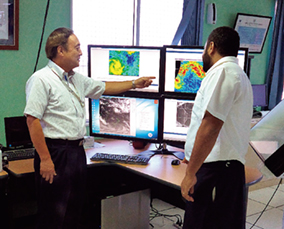
Expert Kuroiwa, who has contributed to the capacity building of FMS and the meteorological bureaus of Pacific Island Countries for over 25 years (Photo: FMS)
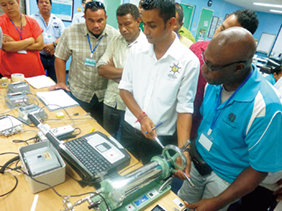
FMS personnel explaining how to calibrate meteorological observation equipment to the staff of meteorological bureaus of various Pacific Island Countries during the regional training conducted by FMS (Photo: Expert Kuroiwa)
*1 The 10 countries are Fiji, Kiribati, Tuvalu, Vanuatu, Nauru, Tonga, Niue, Cook Islands, Samoa, and Solomon Islands.
*2 Calibration: Checking the current status (accuracy, functions, operation) of measuring instruments. This work is necessary in order to obtain accurate data.
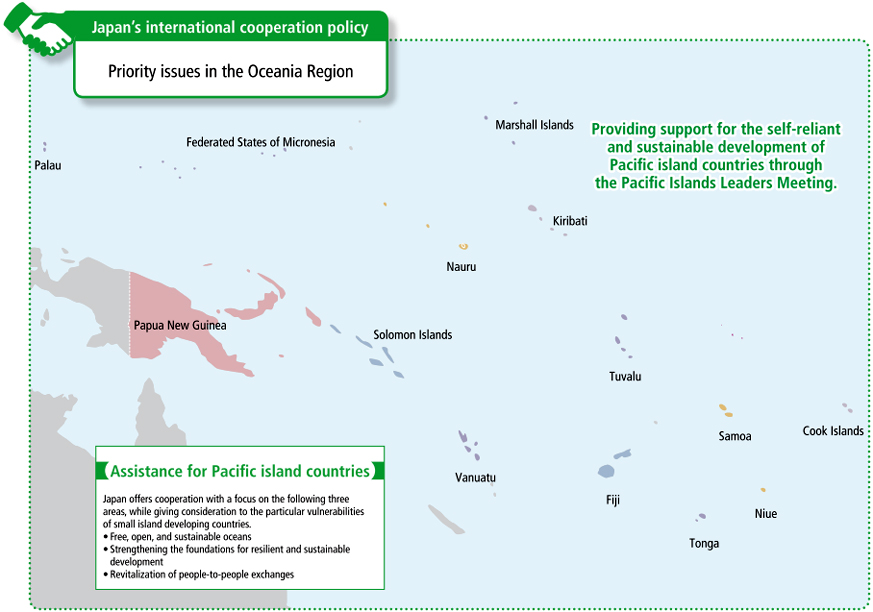
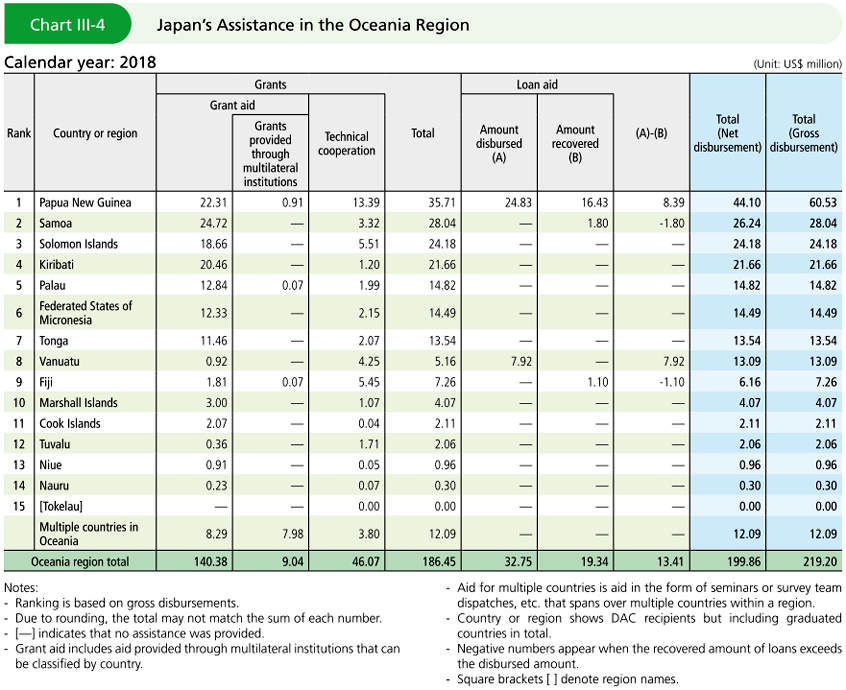
- Note 6: The 16 PIF member countries and two member regions are Australia, New Zealand, Papua New Guinea, Fiji, Samoa, Solomon Islands, Vanuatu, Tonga, Nauru, Kiribati, Tuvalu, Federated States of Micronesia, Marshall Islands, Palau, Cook Islands, Niue, French Polynesia, and New Caledonia.
